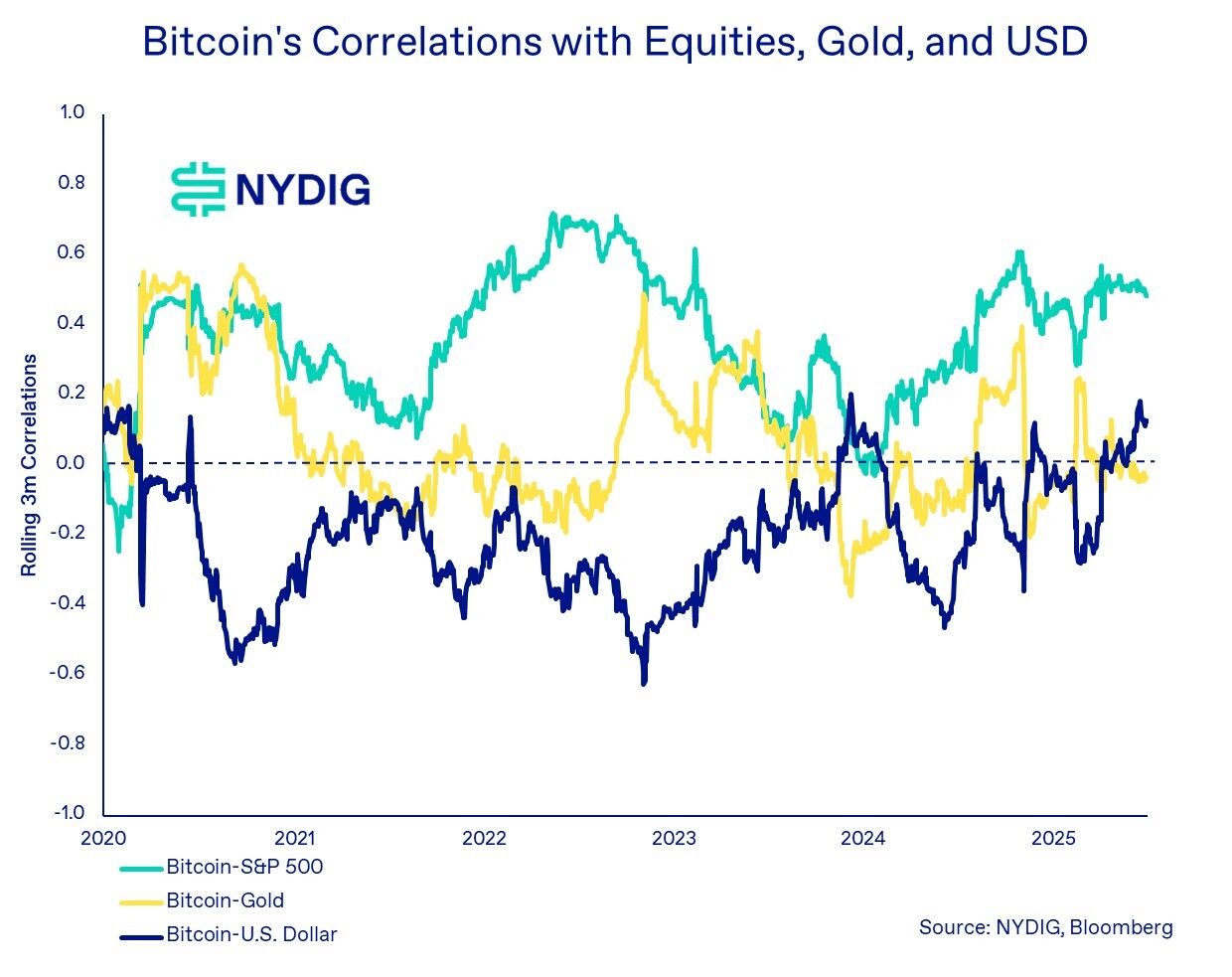“Wall Street is coming for bitcoin.”
That phrase used to spark both hope and fear across crypto circles. Today, it’s no longer a future threat or a bullish promise—it’s just reality.
The original premise of bitcoin (or crypto in general)—an asset that is censorship-resistant and doesn’t answer to any traditional financial institution or government—is fading fast as Wall Street giants (as well as powerful political figures) continue to establish their strong foothold in the digital assets space.
During the early years of the digital assets revolution, bitcoin was celebrated as uncorrelated and unapologetically anti-establishment. TradFi asset classes like S&P 500 would rise and fall—bitcoin didn’t care.
What bitcoin did care about were the flaws in the traditional financial system, which are still here to this day.
A major example in BTC’s history that’s not-so-talked about anymore is the 2013 Cyprus banking crisis.
The crisis, which occurred due to overexposure of banks to overleveraged local property companies and amid Europe’s debt crisis, saw deposits above 100,000 euros get a substantial haircut.
In fact, 47.5% of uninsured deposits were seized. Bitcoin’s response was to move sharply upward to, for the first time in its history, cross the $1,000 threshold.
After a prolonged bear market over the collapse of Mt. Gox, the idea of mass adoption grew, with Wall Street’s entry into the sector seen as a stamp of validation for bitcoin as it meant more liquidity, mass adoption and price maturity.
That changed everything.
The price might have matured, as evidenced by waning volatility. But let’s face it—bitcoin is now just another macro-driven risk asset.
“Bitcoin, once celebrated for its low correlation to mainstream financial assets, has increasingly exhibited sensitivity to the same variables that drive equity markets over short time frames,” said NYDIC Research in a report.
In fact, the correlation is now hovering near the higher end of the historical range, according to NYDIG’s calculations. “Bitcoin’s correlation with U.S. equities remained elevated through the end of the quarter, closing at 0.48, a level near the higher end of its historical range.”

Simply put, when there is blood on the street (Wall Street that is), bitcoin bleeds too. When Wall Street sneezes, bitcoin catches a cold.
Even bitcoin’s “digital gold” moniker is under pressure.
NYDIG notes that bitcoin’s correlation to physical gold and the U.S. dollar is near zero. So much for the “hedge” argument—at least for now.
Risk asset
So why the shift?
The answer is simple: to Wall Street, bitcoin is just another risk asset, not digital gold, which is synonymous with “safe haven.”
Investors are repricing everything from central bank policy whiplash to geopolitical tension—digital assets included.
“This persistent correlation strength with U.S. equities can largely be attributed to a series of macroeconomic and geopolitical developments, the tariff turmoil and the rising number of global conflicts, which significantly influenced investor sentiment and asset repricing across markets,” said NYDIG.
And like it or not, this is here to stay—at least for a short to medium-term.
As long as central bank policy, macro, and war-linked red headlines hit the tape, bitcoin will likely move in tandem with equities.
“The current correlation regime may persist as long as global risk sentiment, central bank policy, and geopolitical flashpoints remain dominant market narratives,” NYDIG’s report said.
For the maxis and long-term holders, the original vision hasn’t changed. Bitcoin’s limited supply, borderless access, and decentralized nature remain untouched. Just don’t expect them to impact price action just yet.
For now, the market sees bitcoin as just another stock ticker. Just balance your trade strategies accordingly.

